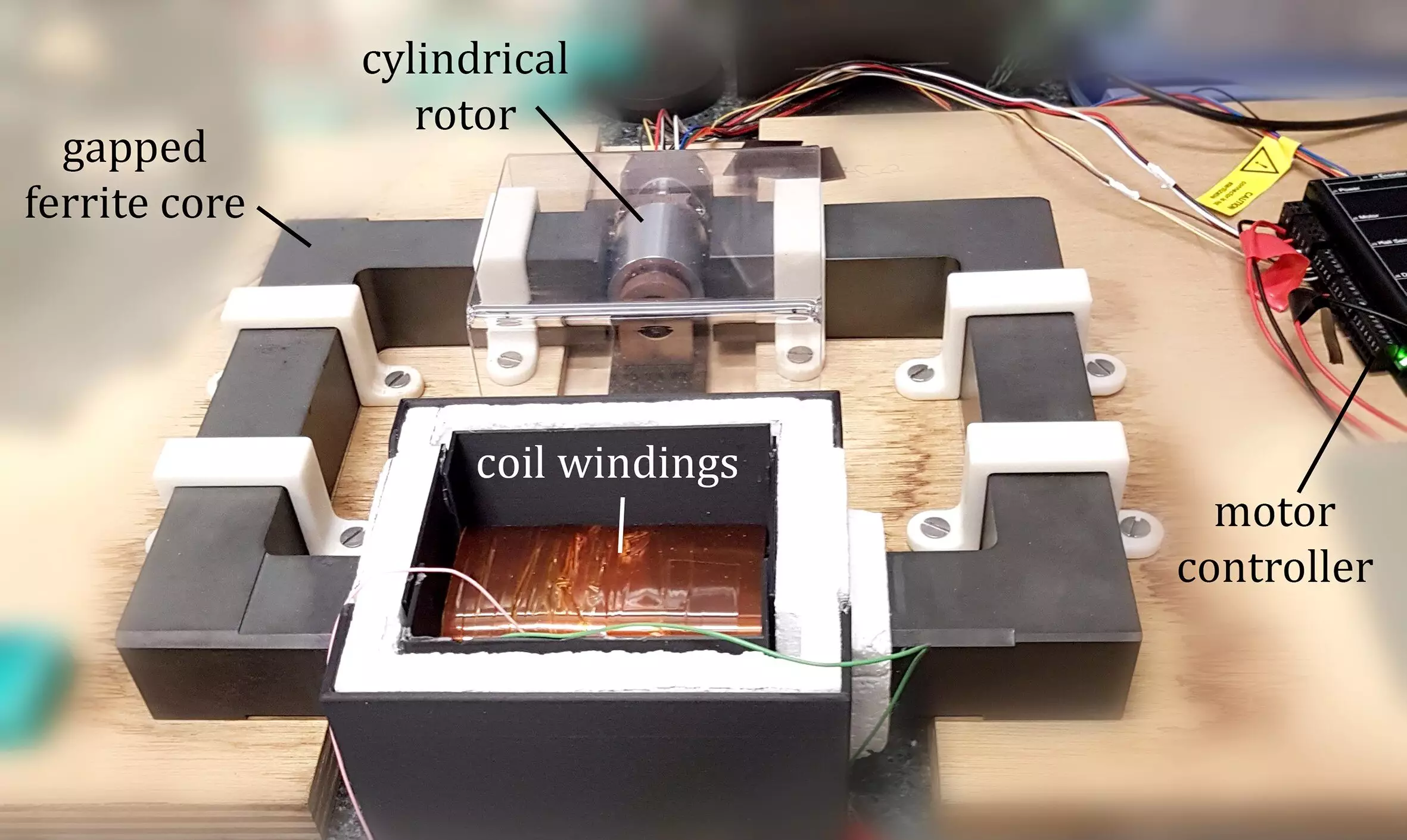In a remarkable development, physicists from the University of Southampton have recently validated a theory that has remained largely untested for fifty years: the Zel’dovich effect. Named after Soviet physicist Yakov Zel’dovich, this phenomenon relates to the behavior of electromagnetic waves, particularly those imbued with angular momentum. The researchers have demonstrated that the energy of these “twisted waves” can in fact be amplified when they interact with a specifically rotating object, a concept that had previously eluded empirical verification within electromagnetic contexts.
Dr. Marion Cromb, a core member of the research team, explained that when a rotating object—specifically an aluminum cylinder—engages with these waves, the conditions must meet precise criteria for amplification to occur. If the object is rotating fast enough, the interaction can shift the incoming wave frequency into what is defined as a “negative frequency.” This transformative state not only decouples from the typical absorption expected but rather triggers an amplification effect. Cromb noted that earlier experiments had confirmed this idea within sound waves, but the recent work signifies a critical leap in proving the concept within electromagnetic fields.
The mechanics underlying the Zel’dovich effect hinge on the angular momentum of twisted waves. In fluid dynamics, the Doppler effect is a familiar phenomenon that most people have encountered: the noticeable change in pitch as an emergency vehicle approaches and then recedes. As waves compress in front of the moving object, they generate higher frequency sounds, while waves stretching behind it yield lower frequencies. This principle transcends merely auditory phenomena and extends into the realm of light, where astronomers observe shifts in frequency to determine the movement of celestial bodies.
In their recent experiments, the team managed to replicate this phenomenon with electromagnetic waves. However, the true novelty of their findings lies in achieving conditions under which the incoming wave, instead of being absorbed by the rotating cylinder, reflects back with greater energy. This shift exemplifies a “rotational Doppler” effect, wherein the angular frequency perceived by the cylinder hits a threshold allowing it to flip into negative frequencies. In the context of wave interaction, a negative frequency constitutes negative absorption, and thus, leads to amplification.
Cromb detailed the mechanism of this effect, stating, “The metal cylinder must experience these waves in such a manner that it perceives their angular frequency shifts dramatically—enabling the waves to oscillate negative frequencies and consequentially experience amplification.”
The implications of proving the Zel’dovich effect span beyond just theoretical physics; they could influence practical applications in fields including electrical engineering. For instance, enhancements to induction generators, commonplace in renewable energy systems such as wind turbines, could stem from these findings. The researchers posit that a greater understanding of wave interactions and energy behavior could guide future technological innovations aimed at energy efficiency.
Moreover, the successful demonstration opens the door for future explorations into quantum applications of the Zel’dovich effect. Professor Hendrik Ulbricht, the project supervisor, expressed excitement over the potential of this research, stating, “Having experimentally validated the electromagnetic manifestation of the Zel’dovich effect marks a significant milestone. The next logical step lies within the quantum domain.” With the ability to create conditions that could manipulate quantum vacuum fluctuations, researchers could leverage these discoveries to innovate in quantum-scale technologies.
The sophisticated understanding of the Zel’dovich effect coupled with the simplicity of their experimental setup forms an intriguing aspect of this research. Utilizing a resonant circuit, which interacts with a spinning aluminum cylinder, the team was able to craft the ideal conditions necessary to observe this effect. Dr. Cromb expressed satisfaction with the ease of replicating these results, emphasizing the rewarding nature of conducting research during unprecedented times, such as the COVID-19 pandemic.
In closing, the recent validations secured by scientists at the University of Southampton not only shine a light on a long-held theory but also signal new avenues of inquiry within both classical and quantum physics. As they continue to uncover the fundamental nature of wave behavior, we may witness the convergence of theoretical principles with tangible applications, potentially reshaping our approach to energy generation and utilization in the future.


Leave a Reply